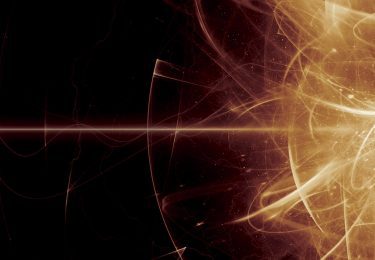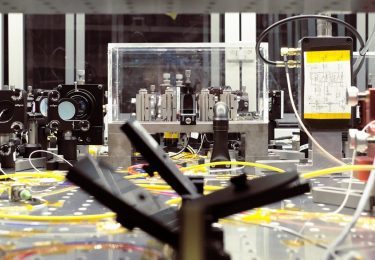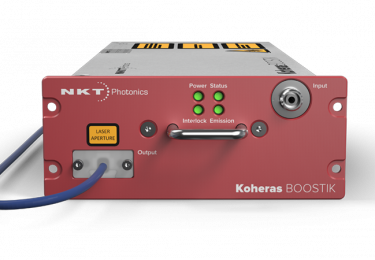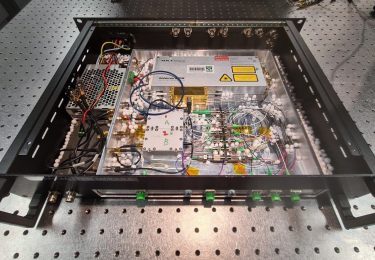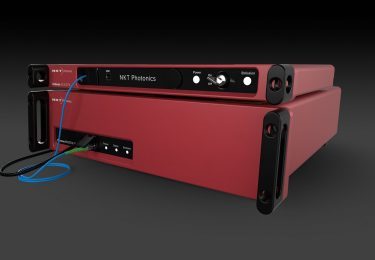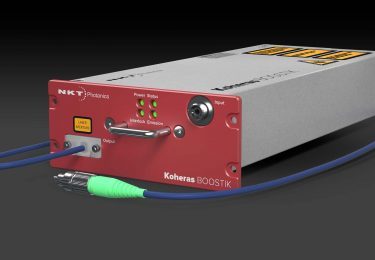Koheras HARMONIK – high-power UV & VIS fiber lasers
Do you need light in the 300-900 nm range to address the wavelengths of e.g. rubidium, strontium, barium, or ytterbium? Get it with our new Koheras HARMONIK fiber laser systems!
The Koheras HARMONIK is a range of single-frequency mode-hop free and ultra-stable narrow-linewidth fiber lasers. They deliver high power and narrow linewidth light at the exact atomic transition you need for your quantum application.
If you are looking for high-quality light for quantum computing, sensing, metrology, and communications, try this new class of lasers. They have an inherently robust single-frequency design with low phase and intensity noise, high OSNR, and high optical power.
All with industrial reliability.
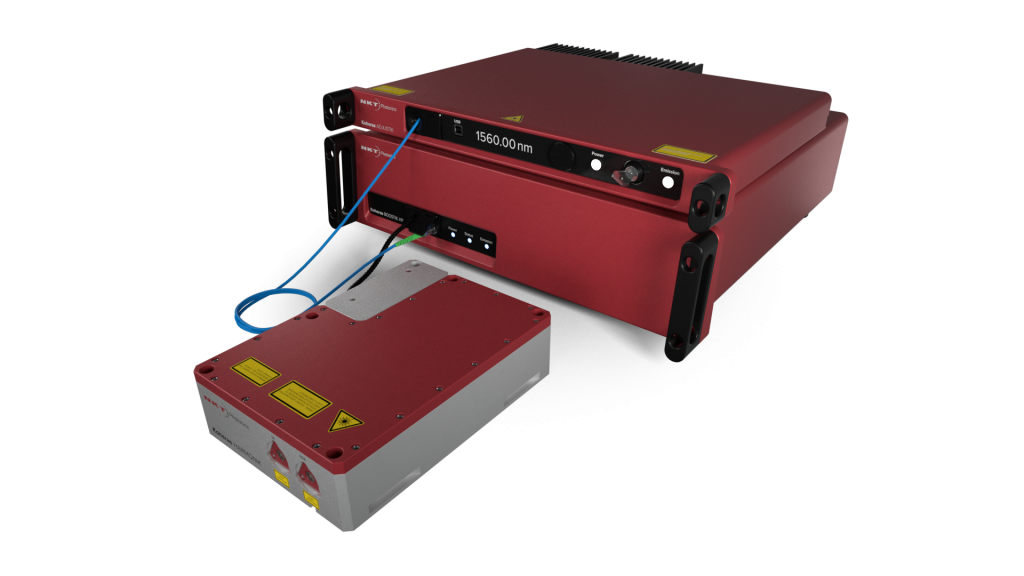
Key Features
Up to 10 W output power
Sub-kHz linewidth
Ultra-low frequency and intensity noise
Wide wavelength tuning
Excellent beam quality, M2 < 1.1
Fiber delivery option
Solutions
You can now get lasers at the following wavelengths:
- 780 nm, 840 nm, and 1064 nm for rubidium
- 317 nm, 813 nm, and 1064 nm for strontium
- 532 nm and 1762 nm for barium
- 399 nm, 556 nm, 638 nm, 770 nm, and 1064 nm for ytterbium

Was your wavelength not on the list? Get in touch for other wavelengths.
New wavelengths for your quantum research
See below for VIS wavelength capabilities of the HARMONIK. All lasers are pumped by our low-noise fiber lasers in the NIR (not shown), allowing the lasers to be locked to frequency references at either their fundamental or converted wavelengths.
Industrial reliability
We know that uptime is important to you. Our Koheras fiber lasers are inherently stable. They are reliable, alignment-free, and maintenance-free. You can mount them in a rack or place them upside down, they just do their job. Others even trust our Koheras lasers enough to send them into space. And should you need support, we have a team of dedicated engineers ready to help.
15,000 Koheras lasers have been installed in demanding industrial applications for decades. Now, they are ready to assist you in your quantum research.
Unique fiber delivery system
Do you want to mount the laser system in a rack? No problem. With the unique fiber delivery system, you can get light wherever you want. The fiber delivery solution handles high power, preserves the low-noise laser properties, and delivers single-mode light at all wavelengths.
Fast wavelength modulation
The systems are equipped with easy and user-friendly fast wavelength modulation. This feature is typically used to lock the laser to an external stable reference — such as an atomic transition line or interferometer — to obtain even higher wavelength stability than provided by the free-running laser.
The HARMONIK systems offer a 15 GHz mode hop-free tunability with a 10% power change.
Thermal tuning
All Koheras fiber lasers are equipped with thermoelectric temperature controllers (TECs).
The TECs stabilize the operation of the laser and make it insensitive to environmental temperature fluctuations. The TECs also make it possible to tune the center wavelength by changing the operating temperature of the laser.
At standard room temperature (around 20-30°C or 68-86°F) the laser can be thermally tuned to an industry-leading 500 pm.
Looking for a Titanium-Sapphire substitute?
You can successfully replace Ti:Sapphire lasers with Koheras HARMONIK fiber laser systems to get a stable alternative with high power and a narrow linewidth.
More details on noise and linewidth
If you want more details about phase noise, spectral linewidth, frequency stability, or how to wavelength tune your Koheras laser, we have some application notes for you.
Laser phase noise is a frequency-domain view of the noise spectrum around the laser signal. Read more about phase noise in single-frequency lasers.
Spectral linewidth is a measure of the spectral content of the laser light. Read more about linewidth measurement methods.
The laser’s frequency stability is often described in terms of its spectral linewidth. However, this term lacks detail about the laser frequency noise which is often critical in laser applications. Read the analysis of the laser frequency stability using beat-note measurement.
The wavelength of the laser is controlled by the temperature and strain of the DFB cavity. Learn how to tune your Koheras laser.

Specifications
1) Center wavelength is selectable within the specified range.
2) Shot noise-limited > 5 Mhz.
3) After a 10-20 minute warm-up.
4) Delivered as tabletop modules(s).
HARMONIK H31
HARMONIK H40
HARMONIK H53
HARMONIK H55

HARMONIK H63
HARMONIK H76
HARMONIK H78
HARMONIK H81
1) 2.5 m high power, single mode fiber delivery
Downloads
- Koheras HARMONIK Fiber Coupler Installation Guide
- Koheras HARMONIK H31 Datasheet
- Koheras HARMONIK H40 Datasheet
- Koheras HARMONIK H53 Datasheet
- Koheras HARMONIK H55 Datasheet
- Koheras HARMONIK H63 Datasheet
- Koheras HARMONIK H76 Datasheet
- Koheras HARMONIK H78 Datasheet
- Koheras HARMONIK H81 Datasheet
- Koheras HARMONIK Laser Safety, Handling, and Regulatory Information
- Koheras HARMONIK Product Guide
- Koheras HARMONIK Step File H76 H78 .stp



